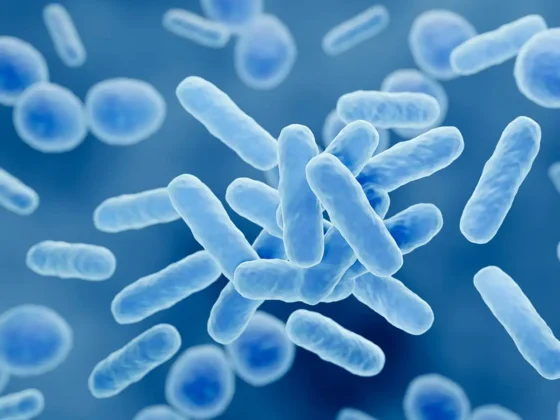New Delhi, 30 November 2024: In a troubling revelation, the World Health Organization (WHO) has reported a surge in HIV infections and AIDS-related deaths in the Western Pacific region. The alarming trend underscores the need for immediate action to address gaps in prevention, diagnosis, and treatment. Despite global efforts to combat the epidemic, the region faces a growing challenge, threatening to undo decades of progress in managing HIV/AIDS.
The WHO’s findings highlight a sharp rise in HIV cases across the Western Pacific, which includes countries such as China, Japan, the Philippines, and Pacific island nations. While global HIV rates have seen a decline in recent years, the Western Pacific region has become an outlier, with infection rates increasing at an unprecedented pace.
Dr. Takeshi Kasai, WHO Regional Director for the Western Pacific, stated, “The resurgence of HIV infections and related deaths in this region is a wake-up call. It highlights persistent gaps in our healthcare systems and societal barriers that hinder effective prevention and treatment.”
HIV-AIDS: Key Drivers of the Surge
Lack of Awareness and Testing: A significant portion of the population remains unaware of their HIV status. Many infected individuals delay testing, leading to late diagnoses and higher chances of transmitting the virus to others. Early detection is crucial for effective treatment, but stigma and limited access to testing facilities deter many from seeking help.
Stigma and Discrimination: Social stigma surrounding HIV/AIDS continues to be a major barrier in the region. Many individuals fear discrimination and ostracization, preventing them from seeking necessary healthcare. This is particularly prevalent among key populations such as men who have sex with men (MSM), sex workers, and people who inject drugs.
Gaps in Treatment Coverage: Although antiretroviral therapy (ART) is widely recognized as the gold standard for managing HIV, access remains uneven. In low-income areas and remote Pacific islands, logistical challenges and resource constraints limit the availability of life-saving medications.
High Rates Among Vulnerable Groups: The epidemic disproportionately affects marginalized communities, including LGBTQ+ individuals, sex workers, and people who inject drugs. The lack of targeted intervention programs exacerbates the vulnerability of these groups.
Statistics Reflect a Dire Situation
The WHO report revealed troubling statistics:
New HIV infections in the region increased by nearly 20% over the past five years.
AIDS-related deaths rose by approximately 10% in the same period.
Key populations and their partners account for more than half of new infections, highlighting the need for targeted approaches.
The Philippines, in particular, has seen one of the fastest-growing HIV epidemics globally, with infection rates climbing by over 200% in the last decade.
Efforts to Curb the Crisis
Scaling Up Testing and Early Diagnosis: Health authorities across the region are emphasizing the importance of routine HIV testing. Rapid diagnostic tools and community-based testing programs aim to identify infections early, allowing for timely initiation of ART.
Expanding Access to Antiretroviral Therapy: Efforts are underway to ensure that ART is accessible to all who need it. Governments and international organizations are working to improve the supply chain, reduce costs, and integrate treatment into primary healthcare services.
Community Outreach and Education: Addressing stigma requires extensive education and outreach programs. Non-governmental organizations (NGOs) and community leaders play a crucial role in dispelling myths and fostering acceptance. Empowering vulnerable groups with information and resources is vital for curbing transmission.
Prevention Strategies: Preventive measures such as condom distribution, pre-exposure prophylaxis (PrEP), and harm reduction programs for drug users are being scaled up. These interventions have shown significant success in reducing infection rates when implemented effectively.
HIV-AIDS Prevention: Challenges Ahead
Despite ongoing efforts, the region faces several challenges. Funding constraints remain a significant obstacle, particularly in low-income nations and remote areas. Additionally, deeply entrenched cultural attitudes toward HIV/AIDS hinder progress in reducing stigma and discrimination.
The COVID-19 pandemic has further strained healthcare systems, diverting resources and attention away from HIV/AIDS programs. As a result, routine testing and outreach initiatives have been disrupted, compounding the crisis.
Global Implications of the Surge
The resurgence of HIV in the Western Pacific could have global implications. A failure to contain the epidemic in this region may lead to the virus spreading beyond its borders, undermining international efforts to achieve the United Nations Sustainable Development Goal of ending the AIDS epidemic by 2030.
Dr. Kasai warned, “This is not just a regional issue. The interconnected nature of our world means that a resurgence in one region poses risks for others. Collective action is imperative.”
The fight against HIV/AIDS in the Western Pacific requires a multifaceted approach:
Policy Reform: Governments must adopt inclusive policies that address stigma and ensure healthcare access for all.
Increased Funding: International support and domestic investment are needed to strengthen healthcare infrastructure and fund prevention programs.
Partnerships: Collaboration between governments, NGOs, and the private sector can help bridge gaps in resources and expertise.
Advocacy: Public figures and influencers can play a key role in normalizing conversations about HIV/AIDS, reducing stigma, and encouraging testing and treatment.











